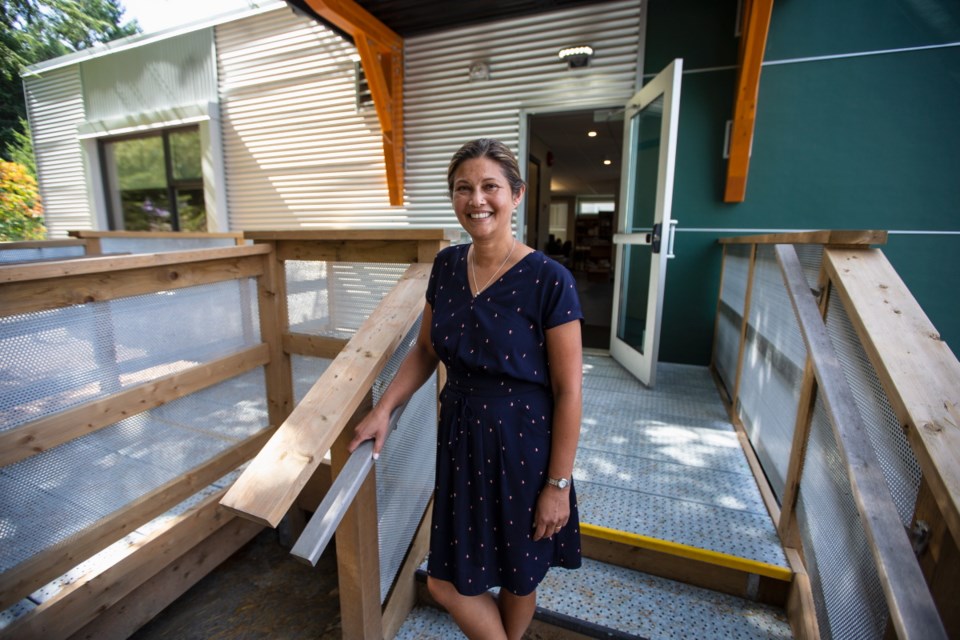The fight against opioids and drug addiction doesn’t always happen on the streets.
It’s also a concern for schools, and school officials know that more needs to be done.
Island Health’s Reg Fleming, who supervises Discovery Youth & Family Substance Use Services, said he meets regularly with school district representatives.
“Our primary referral source is from schools, by a large degree. Secondary to that would be parents.”
He said the two top substances his office deals with are alcohol and cannabis, with other substance issues dependent on what’s happening in the community and what’s available.
“Very small percentages of youth are using opiates,” he said. “But the thing is that when they’re using opiates it’s so high-risk now, and even when they’re using other drugs.
“The risk is definitely more than it has been historically.”
The Ministry of Education consulted the provincial health officer about putting naloxone kits in schools — naloxone reverses the effects of opioid overdose — but was advised that schools are not considered high-risk environments.
However, individual schools can get their own naloxone kits and see that staff know how to use them.
Although it has never had to deal with an opioid overdose at a school, the Greater Victoria School District has the kits in all secondary and middle schools, where administrators have been trained in the their use.
Harold Caldwell, the district’s director of learning, said simply telling youth “no” when it comes to drugs doesn’t work.
“Avoid, delay, reduce use” becomes a key message, Caldwell said. Youth are also advised to carry naloxone if they are around opioids, he said.
In the Sooke School District, preventive measures include wellness centres in high schools, said Sooke School Board chairman Ravi Parmar. For now, the centre at Belmont Secondary School is the only one that operates full time.
“Our wellness centres play a pretty critical role in terms of secondary schools,” Parmar said. “Having an addiction counsellor inside Belmont, a facility that houses almost 1,300 kids, plays a big part.”
Conversations that happen within schools are also vital, he said.
“We know that it’s an issue and we need to work harder to make it more relevant.”
Sixteen-year-old Abby Barker, a student in the district in 2018-19, died of a suspected drug overdose on Aug. 8.
Parmar said the district has made an important move by hiring Ruchi McArthur as district principal in charge of healthy schools — a role that oversees all aspects of healthy living for both students and staff.
“It’s kind of similar to the province having the new minister of mental health and addictions,” Parmar said.
McArthur said the opioid crisis is tragic.
“And it’s even sadder when ... we lose a child or a student,” she said. “And that does fall under the ‘healthy schools’ but it’s also a wider conversation.”
Losing a child impacts everybody, McArthur said.
There were 23 overdose deaths throughout Victoria in the first five months of 2019, followed by a spike this month. Such spikes are often tied to synthetic opioids such as fentanyl and carfentanil.
McArthur said her position was created to help bring all parties related to an issue under one roof.
“Bring in the supports that our community partners bring to our schools.”
Island Health is a major part of that effort, McArthur said
She said it is vital to look at students’ physical, mental, social and emotional well-being when it comes to substance abuse.
“Substance abuse is a symptom of what they’re facing.”
McArthur said evidence shows that most young people are doing well, “but there are opportunities for improvement, always.”
Education Minister Rob Fleming said a comprehensive approach to the problem is being taken.
“It’s got to start with kids at a younger age than what we might think. We have lots of opportunities in the curriculum around physical and health education to have teachers working with kids and bringing in experts to do that kind of education, both around their mental well-being and avoiding substance use and abuse.
“But we also have for kids that are already drug-involved some new resources that are rolling out in communities around British Columbia and here in Victoria. We opened the Foundry Centre last year, which works with youth and adolescents aged 12 to 24.”
The centre takes a preventive approach to helping young people deal with issues such as anxiety and stress, Fleming said.



